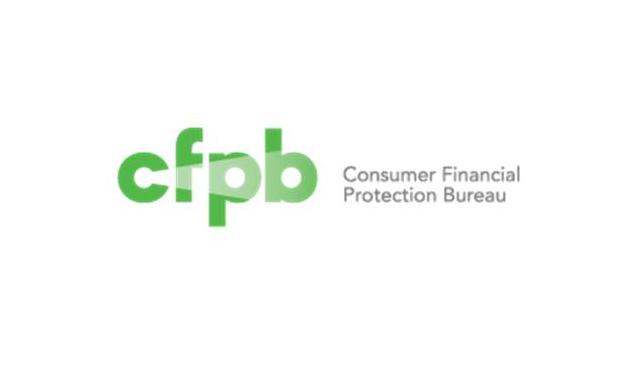Consumer Financial Protection Bureau Report Finds Private Student Loan Borrowers Face Roadblocks to Repayment
Complaints of Surprises, Runarounds, and Dead-Ends Similar to Problems Found in Mortgage Servicing
WASHINGTON, D.C. — The Consumer Financial Protection Bureau (CFPB) Student Loan Ombudsman released a report today that details problems reported by private student loan borrowers. According to the report, private student loan borrowers say they are sometimes surprised by the terms and conditions of their loans, they are given the runaround by their loan servicer, and they have few options to refinance or modify repayment for a better deal.
“Graduates don’t have a fair chance to pay back their debts if they are faced with surprises, runarounds, and dead-ends by student loan servicers,” said CFPB Director Richard Cordray, who was presented with the report today. “These young consumers are facing serious challenges in dealing with their debt, which can hold them back from getting ahead in life.”
“Student loan borrower stories of detours and dead-ends with their servicers bear an uncanny resemblance to problematic practices uncovered in the mortgage servicing business,” said CFPB Student Loan Ombudsman Rohit Chopra, who authored the report. “Consumers deserve clarity, not chaos and confusion.”
Student loans have now surpassed credit cards as the largest source of consumer debt in the United States. Earlier this year, the CFPB announced that outstanding student loan debt crossed the $1 trillion mark. Before the financial crisis, the private student loan market boomed and many consumers borrowed significantly to pay for postsecondary education. But unlike federal student loans, private student loans generally have higher and variable interest rates and may not allow borrowers to easily manage their payments in times of hardship.
The Dodd-Frank Wall Street Reform and Consumer Protection Act established an ombudsman for student loans within the CFPB to assist borrowers with private student loan complaints. Today’s report, which was mandated by Congress, analyzed approximately 2,900 private student loan complaints, comments, and other submissions and input from borrowers. The report found that roughly 95 percent of the complaints are about loan servicing – when borrowers try to pay back their debt or are unable to pay.
The three major findings of the report are:
- Surprises cause borrower confusion: Private student loan borrowers told the CFPB that after they graduate, some have a hard time figuring out how much they owe. Borrowers complain that they may not receive the information they need about their loans when repayments begin, and are caught off guard by unexpected terms and costs. Some surprises include unknown or misunderstood terms and conditions, accounts changing hands, unauthorized payments, and unexpected forbearance fees. With limited information to anticipate and avoid these surprises, some borrowers end up in trouble.
- Borrowers report getting the runaround from servicers: A common theme found in the complaints is the difficulty some borrowers face when trying to contact their servicer. Borrowers report having difficulty taking advantage of the incentives promised to them before they signed up for the loan. Then, whether it is looking for clear and accurate information about bills, trying to find payment options, or simply trying to get payments processed properly, some borrowers complain about getting the runaround. This may include payments credited late or unevenly, faulty record-keeping, and inadequate assistance from servicing staff. The report finds that the service problems in private student loan servicing reported by borrowers mirrors the experiences borrowers have reported in mortgage servicing.
- Borrowers face refinancing dead-ends: The report found that another theme of the complaints was that responsible borrowers find themselves locked into loan terms they cannot negotiate out of – no matter what their circumstances. Despite efforts to make good on their loans, some borrowers stated that they ended up in distress with limited or no options for deferrals, forbearance, or interest-rate changes. According to the complaints, even some co-signers who were promised that they would be released from responsibility after a period of on-time payments, may find themselves trapped in the loan. The results can be disastrous for some borrowers, especially ones new to the job market and struggling to find work.
The CFPB Student Loan Ombudsman’s Annual Report is available at: http:/files.consumerfinance.gov/f/201210_cfpb_Student-Loan-Ombudsman-Annual-Report.pdf
A factsheet about the report is available at: http:/files.consumerfinance.gov/f/201210_cfpb_Factsheet-Student-Loan-Ombudsman-Annual-Report.pdf
The CFPB today is also adding more “Ask CFPB” questions for consumers looking for straight, accurate, and up-to-date information about student loans. To find out more, go to:
http://www.consumerfinance.gov/askcfpb/search?selected_facets=category_exact:Student%20Loans
Today’s report follows from CFPB efforts on a number of fronts to help make the student loan market work better for consumers. Earlier this year, the CFPB and the U.S. Department of Education released a report on the private student loan marketplace and the CFPB published more than 2,000 unique comments from individual consumers about their student debt.
SOURCE: http://www.consumerfinance.gov
~


No Comment